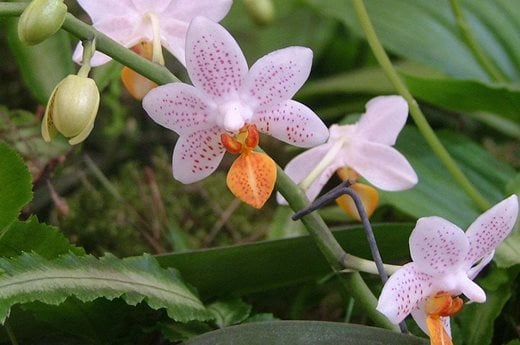Growing phalaenopsis orchids
Moth orchids are popular house plants. With their exotic blooms, striking shapes and attractive colours, they make a great choice for a sunny windowsill
Admire them, desire them or fear them, Phalaeonopsis are relatively straightforward to look after. The Orchid Society of Great Britain explains how.
How do I recognise a good specimen?
Tempted by a plant but not sure whether to make a purchase? When you’re faced with a fabulous-looking selection of plants, how do you select one that’s right for you?
Dwarf Phalaenopsis will be great on your windowsill, but standard size varieties may get very large indeed. Check the label to be sure you have the space to house such a specimen in its desired location.
Look at the plant’s leaves. The bigger the better but be sure to look for healthy leaves, rather than wilted ones.
Care needs
- They love a windowsill that doesn’t get full sun in the summer
- Water weekly under a tap, running tepid water through the pot for 30 seconds, then allow the container to drain
- You don’t need to spray the leaves with mist, instead provide a humidifier or use gravel trays – the plant you’re buying is a hundred generations of selective breeding away from anything that once needed that level of care because it grew in a tropical tree on the coast of the Indian Ocean
- Orchids are grown in chopped bark. If your plant gets too big for its pot, re-pot it using ‘orchid bark’, which is available from garden centres
- Plants are usually sold in clear plastic pots, but re-potting into black or terracotta pots is fine.
Flowering and re-flowering
Once your orchid finishes flowering, cut the flower stem off just below the lower-most flower then keep a lookout for another flower stem, which will usually appear from one of the nodes on the remaining stem. If you cut the stem off at the base, it can take longer to flower again, though when it does any stems will be more vigorous.
Orchids need the temperature to drop in order to flower again though winter house temperatures are usually fine to cause this drop. If your home is more tropical in the winter, move the orchid to a cooler place and keep looking after it. Before long a fabulous new flower spike will appear.



